

By Nathan E. Malpass, Last updated: January 10, 2024
In the fast-paced world of smartphones, the iPhone 14 was expected to be a game-changer with its advanced features and cutting-edge technology. However, even the most sophisticated devices can encounter issues from time to time, and one of the most frustrating problems any iPhone user can face is when their device simply won't turn on.
If you find yourself in this situation, don't panic – you're not alone. In this article, we'll delve into the possible reasons why your iPhone 14 won't turn on and provide you with a step-by-step troubleshooting guide to help you revive your beloved device. Whether you're an experienced iPhone user or a newcomer to the Apple ecosystem, our comprehensive advice will walk you through the process of diagnosing and fixing this common issue.
Part #1: Top Reasons Why iPhone 14 Won’t Turn OnPart #2: Runner-Up Solutions to the Issue “iPhone 14 Won’t Turn On”Part #3: Top Tool to Fix the Issue “iPhone 14 Won’t Turn On” – FoneDog iOS System RecoveryConclusion
Is your iPhone 14 refusing to power up, leaving you perplexed and frustrated? When your high-tech device suddenly becomes unresponsive, it can be a cause for concern. While there can be various factors contributing to this issue, understanding the root causes is the first step in finding a solution. In this section, we'll explore the top reasons why your iPhone 14 won't turn on, shedding light on the potential culprits behind the problem.
Battery Depletion: The most common reason for an unresponsive iPhone is a completely drained battery. If your device's battery has reached a critically low level and hasn't been charged, it may refuse to power on until it receives sufficient power.
Software Glitches: Software plays a crucial role in the functionality of your iPhone. Sometimes, a software glitch or crash can lead to your device becoming unresponsive. These glitches can occur for various reasons, including interrupted updates, incompatible apps, or corrupted system files.
Physical Damage: Physical damage, such as a cracked screen or water exposure, can have a significant impact on your iPhone's ability to function. If the internal components are damaged, your device may not turn on as a safety precaution.
Hardware Issues: Underlying hardware problems, such as a malfunctioning power button, faulty battery, or a damaged motherboard, can take your iPhone to charge forever and turn on. These issues often require professional repair or replacement.
Overheating: Excessive heat can lead to your iPhone automatically shutting down to prevent damage. If your device has become too hot, it may refuse to turn on until it has cooled down to a safe operating temperature.
Firmware Corruption: Firmware is the low-level software that controls the hardware of your iPhone. If the firmware becomes corrupted due to a failed update or other factors, it can render your device unresponsive.
Stuck in DFU Mode or Recovery Mode: In some cases, your iPhone may get stuck in DFU (Device Firmware Update) mode or Recovery Mode, which can prevent it from turning on normally.
Charging Cable and Adapter Issues: Sometimes, the issue lies not with your iPhone itself but with the charging cable or adapter. A damaged or faulty cable/adapter may prevent your device from receiving the necessary power.
Software Updates: While software glitches were mentioned earlier, it's worth noting that a failed or interrupted software update can leave your iPhone in an unresponsive state. An incomplete update can lead to compatibility issues or corrupted files.
Memory Overload: If your iPhone's storage is completely full or nearing its capacity, it can cause the device to become unresponsive. A lack of storage space can hinder essential processes and prevent your iPhone from turning on.
Malware or Security Threats: Though relatively rare on iOS devices, malware or security threats can cause disruptions in normal device operation. In some cases, malicious software may lead to your iPhone not turning on.
Accessory Interference: Sometimes, connected accessories like headphones, chargers, or other peripherals can interfere with the normal startup process of your iPhone. Disconnecting all accessories before attempting to turn on your device may help troubleshoot the issue.
In the upcoming sections of this guide, we will explore potential solutions to each of these reasons, helping you diagnose and address the specific issue of why iPhone 14 not turning on. Understanding the root cause is key to finding the right fix, so be sure to stay with us as we work through these common problems step by step.
While we've already discussed the top reasons why your iPhone 14 won’t turn on in Part 1, it's essential to have a range of potential solutions at your disposal. In this section, we'll explore runner-up solutions to address the issue and revive your unresponsive iPhone.
Charge Your iPhone:
Before attempting any other troubleshooting steps, make sure your iPhone is connected to a reliable power source. Use the original Apple charger and cable, if possible, and let it charge for at least 15 minutes. A completely drained battery may be the primary culprit.
Perform a Hard Reset:
Sometimes, a hard reset can help kick-start your iPhone if it's experiencing minor software glitches. To perform a hard reset on your iPhone 14:
Check for Physical Damage:
Inspect your iPhone for any visible physical damage, such as a cracked screen or liquid exposure. If there's damage, it may require professional repair or replacement.
Try Another Charging Cable and Adapter:
Ensure that your charging cable and adapter are in good working condition. Sometimes, a faulty cable or adapter can prevent your iPhone from charging properly.
Force Restart in Recovery Mode:
If a hard reset doesn't work - iPhone stuck on the hard reset screen, you can try forcing your iPhone into Recovery Mode and then restoring it using iTunes or Finder on a computer. This can help resolve severe software issues. The steps vary depending on your iPhone model, so be sure to look up the specific instructions for your iPhone 14.
Check for Software Updates:
If your iPhone was stuck during a software update, it might need to complete the update process. Connect your iPhone to a Wi-Fi network and check for any pending software updates in the Settings app.
Check for Memory Overload:
If your iPhone's storage is nearly full, it can lead to performance issues, including the device not turning on. Delete unnecessary files or apps to free up space.
Disconnect Accessories:
Disconnect any connected accessories like headphones, chargers, or peripherals. Sometimes, a faulty accessory can interfere with your iPhone's normal operation.
Check for Water Damage:
If your iPhone has been exposed to water or moisture, it can lead to internal damage. Look for signs of water damage, such as a red or pinkish indicator in the SIM card tray slot. If you suspect water damage, it's crucial to take your device to a professional for assessment and possible repair.
Inspect the Power Button:
The power button may be stuck or malfunctioning, preventing your iPhone from turning on. Carefully press the power button several times to ensure it's not stuck. If it seems unresponsive, it may need repair or replacement.
Seek Professional Repair:
If none of the previous solutions work and you're unable to diagnose the issue yourself, it's advisable to consult with an Apple Authorized Service Provider or visit an Apple Store. Trained technicians can perform a comprehensive assessment and provide a solution tailored to your specific situation.
Data Backup and Restore:
If your iPhone is still under warranty and you've exhausted all other options, you may consider a complete data backup and restore. Connect your device to a computer, back up your data using iTunes or Finder, and then perform a factory reset. Keep in mind that this should be a last resort, as it will erase all data on your iPhone.
Remember that diagnosing and resolving hardware or software issues can vary depending on the specific circumstances and the state of your device. It's essential to exercise caution and seek professional assistance when needed, especially if you're uncertain about the cause of the problem or how to address it effectively.
When you're facing the frustrating issue of your iPhone 14 refusing to turn on, it's reassuring to have reliable tools at your disposal for troubleshooting and repair. One such tool that has gained recognition for its effectiveness in resolving iOS device problems, including unresponsive iPhones, is FoneDog iOS System Recovery.
iOS System Recovery
Fix with various iOS system issues like recovery mode, DFU mode, white screen looping on start, etc.
Fix your iOS device to normal from white Apple logo, black screen, blue screen, red screen.
Only fix your iOS to normal, no data loss at all.
Fix iTunes Error 3600, Error 9, Error 14 and various iPhone Error codes
Unfrozen your iPhone, iPad and iPod touch.
Free Download
Free Download
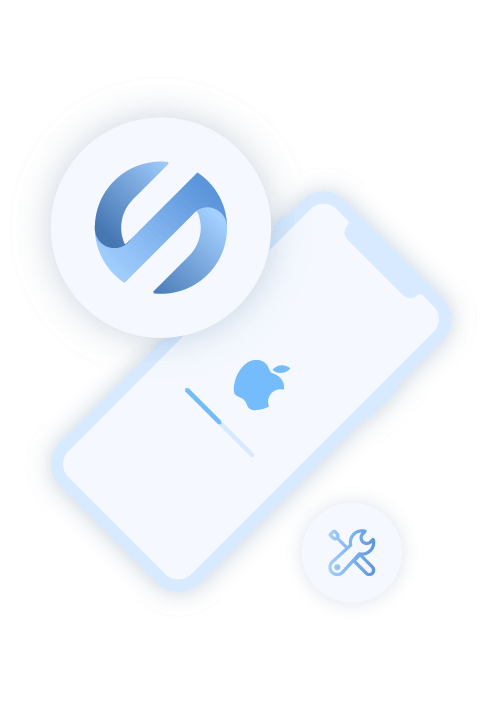
FoneDog iOS System Recovery is a powerful and user-friendly iPhone 15-supported software solution designed to help you fix various iOS system issues, including those that cause your iPhone to not turn on. Here are some key features and benefits of using FoneDog iOS System Recovery:
Here's how you can use FoneDog iOS System Recovery to attempt to fix your iPhone 14 won't turn on:
Step #1: Download and Install: Start by downloading and installing FoneDog iOS System Recovery on your computer.
Step #2: Connect Your iPhone: Launch the software and connect your iPhone 14 to your computer using a USB cable.
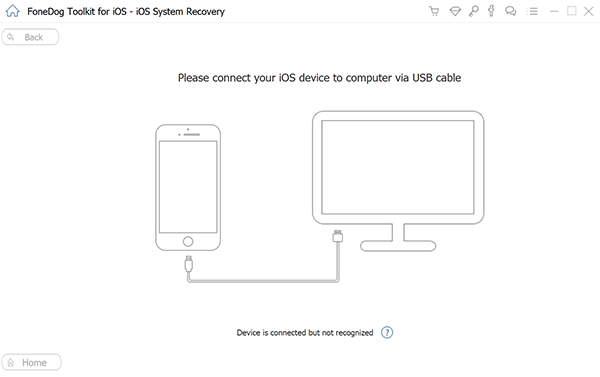
Step #3: Select Repair Mode: Choose the appropriate repair mode for your issue. In this case, select the mode related to an unresponsive or non-turning-on iPhone.
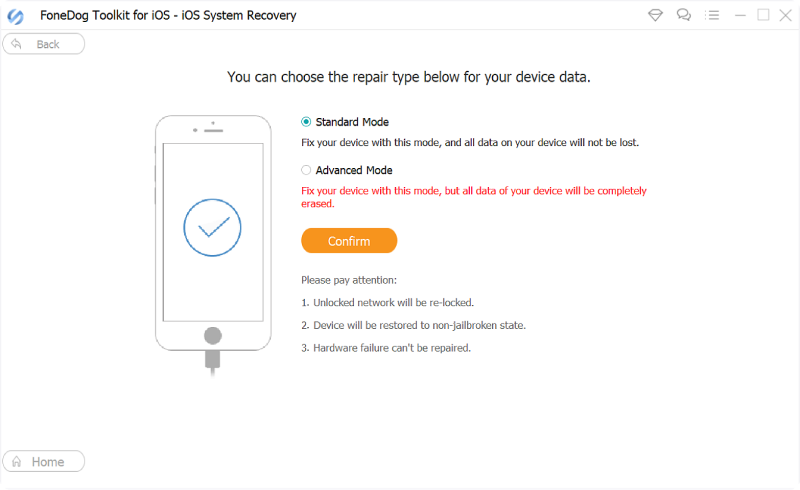
Step #4: Follow On-Screen Instructions: Follow the on-screen instructions provided by the software to initiate the repair process. This may involve entering DFU mode or recovery mode and downloading firmware, and the software will guide you through these steps.
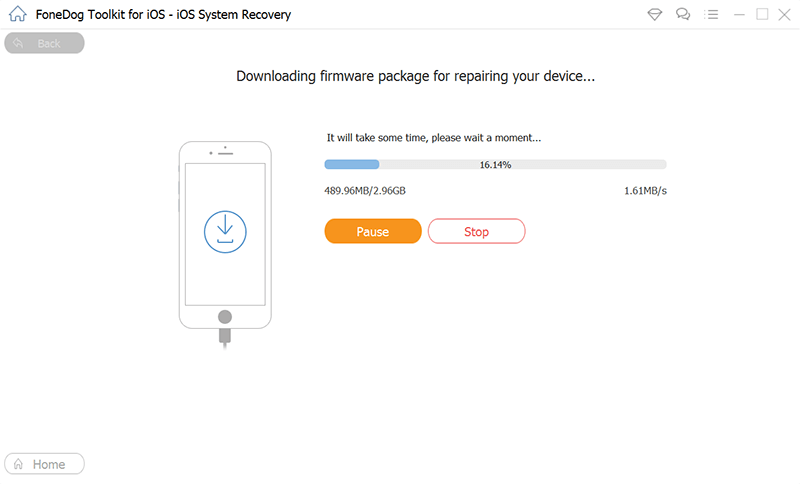
Step #5: Wait for Repair: Allow the software to work its magic. It will attempt to diagnose and repair the issue causing your iPhone not to turn on.
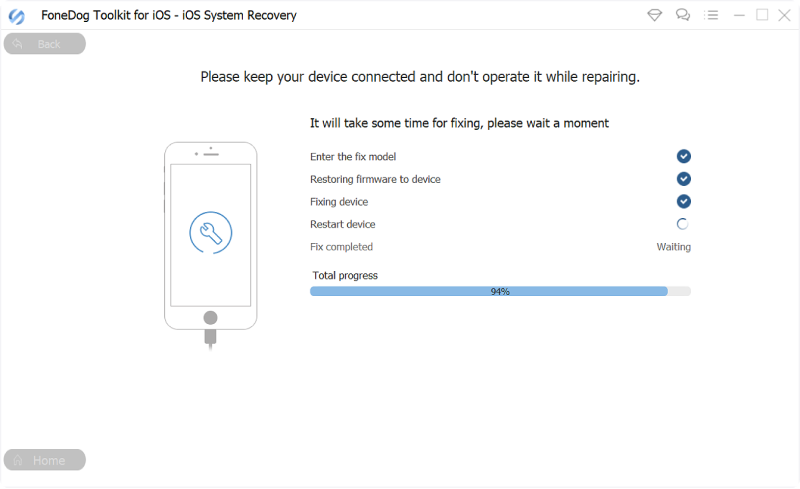
Step #6: Device Reboot: Once the repair is complete, your iPhone should reboot, and hopefully, it will be functioning normally again.
People Also ReadWhat To Do When Your iPad Is Stuck in Recovery Mode? 3 Solutions to TryQuick Guide: Fix the iPhone Stuck on Connect to iTunes Issue
Facing the issue of your iPhone 14 won’t turn on can be a frustrating and stressful experience, but it's essential to approach the problem systematically to identify and resolve the underlying cause. In this comprehensive guide, we've explored the top reasons why your iPhone 14 may not turn on and provided a range of potential solutions to help you get your device back up and running.
Additionally, we introduced the FoneDog iOS System Recovery as a powerful tool to address iOS system-related problems, including unresponsive iPhones. This user-friendly software can be a valuable resource in your efforts to bring your iPhone back to life while preserving your important data.
Leave a Comment
Comment
iOS System Recovery
Repair various iOS system errors back to normal status.
Free Download Free DownloadHot Articles
/
INTERESTINGDULL
/
SIMPLEDIFFICULT
Thank you! Here' re your choices:
Excellent
Rating: 4.5 / 5 (based on 94 ratings)